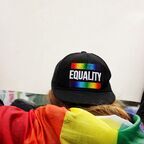Workplace challenges for LGBTQ folks will vary depending on their circumstances.
KEY POINTS
- In May 2021, at least 95 companies in collaboration with the advocacy group The Human Rights Campaign expressed their support of LGBTQ rights.
- Despite progress being made to eradicate stigma, many LGBTQ professionals report having challenges in the workplace.
- Common workplace issues reported by LGBTQ folks include uncertainty over “coming out” at work and speaking up against hetero/cisgender bias.

Lesbian, gay, bisexual, transgender, and queer (LGBTQ) rights at the workplace have seen significant progress in recent years. In May 2021, at least 95 companies in collaboration with the advocacy group The Human Rights Campaign expressed their support of LGBTQ rights and against anti-LGBTQ legislation in the United States. These companies included household names such as Amazon, Google, Apple, Pepsi, and Nike. For some LGBTQ professionals and employees, being open about their gender orientation and gender identity on the job no longer has the same stigma and repercussions as it might have experienced in the recent past.
However, many challenges remain for LGBTQ employees. Below are 12 challenges LGBTQs often experience at the workplace, with references from my books How to Let Go of Negative Thoughts and Emotions and How to Communicate Effectively and Handle Difficult People. Depending on the individual and her/his/their circumstances and environment, the number and degree of difficulties will differ.
- Whether to “come out” at work, either publicly during meetings and other company functions, or privately to manager and colleagues.
- If “still in the closet,” anxiety from trying to “act straight” in order to assimilate/conform to heterosexual norms (internalized homophobia/internalized oppression). Feeling uncomfortable under one’s own skin.
- If “still in the closet,” fear of being “outed” if a coworker accidentally discovers the LGBTQ’s sexual orientation/sexual identity (i.e., via social media).
- If “still in the closet,” internal conflict over whether to socially interact with openly LGBTQ colleagues for fear of being “identified.”
- How to respond when a supervisor, colleague, client, or customer automatically assumes that one is heterosexual, and engages in “heterosexual talk” (i.e., telling a gay male staff member: “Why are you still single? You should marry a nice woman!” or asking a lesbian employee: “Your husband — what does he do for a living?)
- After “coming out” at work, how to respond when co-workers begin to treat them with microaggressions (i.e., more reserved and distant, more impatient and dismissive, or more marginalizing and judgmental), make negative stereotypical assumptions, and/or becomes hostile.
- After “coming out” at work, whether the LGBTQ employee’s verbal and nonverbal communication will be misunderstood and interpreted with bias (i.e. as sexual overtures), with the risk of being falsely accused of sexual harassment.
- After “coming out” at work, how to cope with negative workplace gossip in social circles and peer groups, including on social media.
- How to respond when one hears disparaging, anti-LGBTQ (i.e., homophobic) remarks from managers, co-workers, clients, or customers, whether the comments are made innocently, jokingly, or maliciously.
- Relatedly, when being disparaged or bullied for one’s sexual orientation/gender identity, whether to report the incident to management/human resources and concern over whether organization officials will investigate and take the incident seriously.
- When well-qualified (or best qualified), how to deal with rejection from promotions, advancement, and other opportunities due to possible homophobia.
- Whether to go along with or speak up against the many signs of heterosexual, cisgender privileges and assumptions at the workplace.
For instance:
- Lack of gender-neutral restroom facility or inadequate signage.
- Filling out employment/human resource documents with only two gender options: “male” or “female” (i.e., marital status, healthcare, retirement program, etc.)
- Whether the LGBTQ employee will receive gender-affirming healthcare, life insurance, disability, and other employment benefits.
- Inadequate or no employment health insurance coverage for LGBTQ significant others and dependents.
- Inadequate or no employment life insurance coverage for LGBTQ significant partners and dependents.
- Inadequate or no employment disability insurance coverage for LGBTQ significant partners and dependents.
This blog was written on May 18th 2021 by Preston Ni for Psychology Today.
For tips on how to handle homophobia and sexual identity/sexual-orientation-related stress, please read the full article here.



